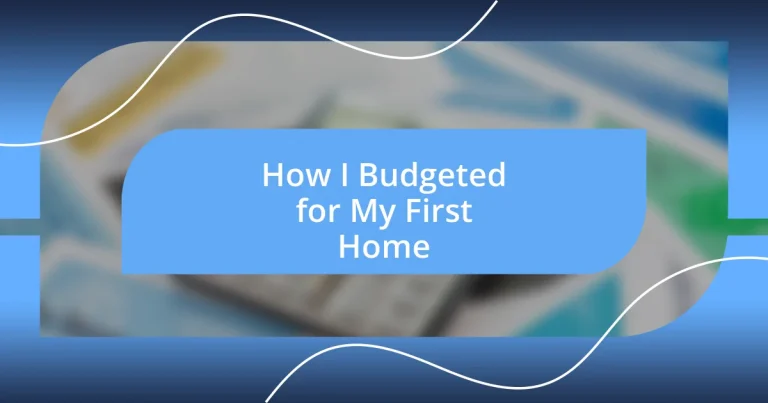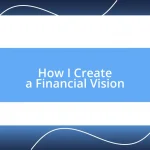Key takeaways:
- Understanding all home buying costs, including closing costs and ongoing expenses, is crucial for accurate budgeting.
- Evaluating your financial situation involves a thorough analysis of income, expenses, debt, and savings to set realistic home purchase goals.
- Flexibility in adjusting your budgeting strategy, considering unexpected expenses and shifting priorities, is essential for maintaining financial health during the home buying process.
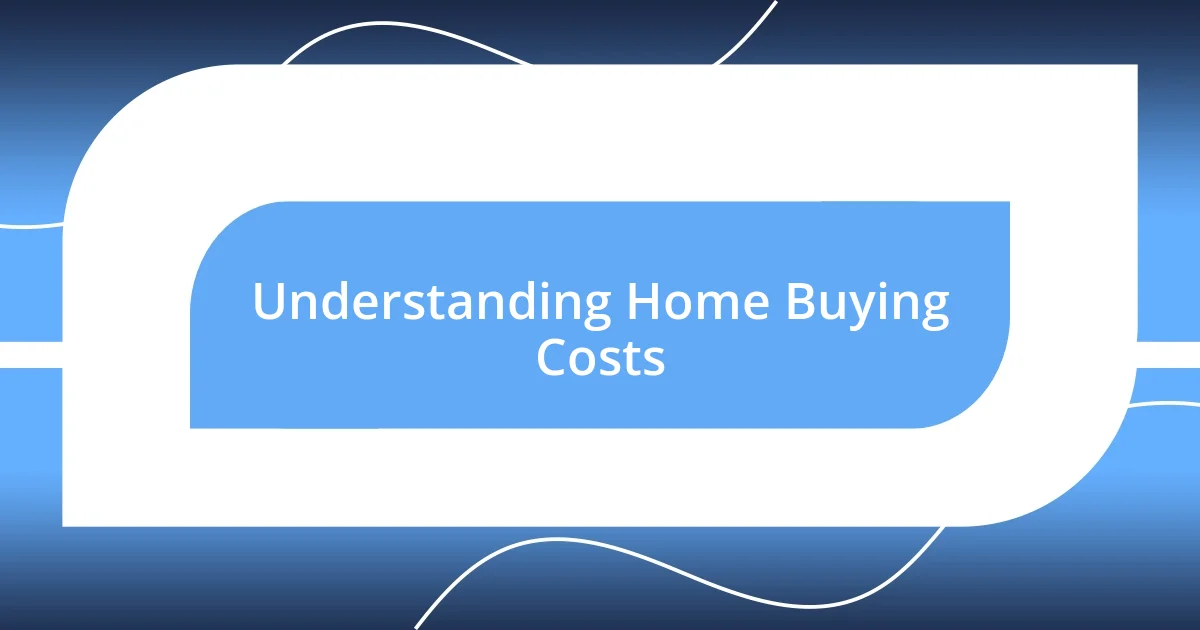
Understanding Home Buying Costs
When I started budgeting for my first home, I quickly learned that costs extend far beyond the listing price. I remember feeling overwhelmed, especially when I encountered unexpected expenses like closing costs, which can range from 2% to 5% of the home price. It hit me—did I really factor this into my budget?
Beyond just the down payment, there are ongoing costs that, while easy to overlook, can have a significant impact on my finances. For instance, property taxes and home insurance became a recurring theme in my monthly budgeting conversations. I often wondered, how can anyone truly be prepared for these surprises? My experience taught me the importance of accounting for these costs as I shaped my financial roadmap.
Then there are the hidden costs, like maintenance and repairs, which can catch first-time buyers off guard. I recall the panic I felt when my new home needed an unexpected roof repair just months after moving in. It made me question, how could I have overlooked this? Budgeting for a home isn’t only about what you invest up front; it’s about planning for the inevitable ups and downs that come with homeownership.
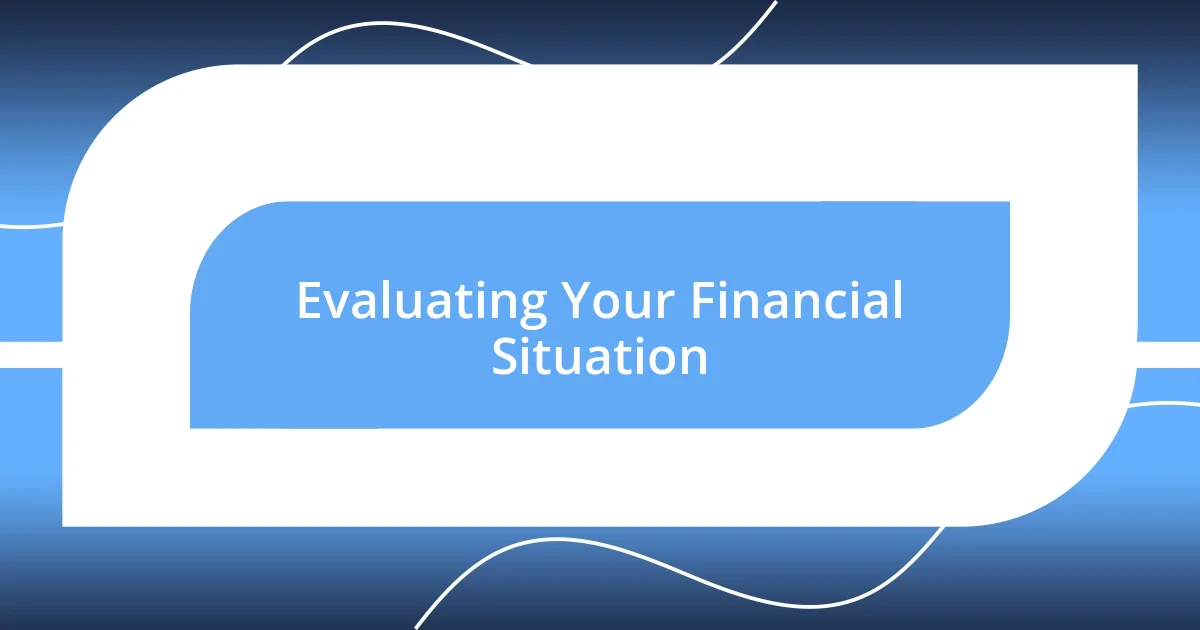
Evaluating Your Financial Situation
To truly understand your financial situation, it’s essential to take a deep dive into your income and expenses. When I sat down to examine my financial landscape, I was surprised at how many small expenditures added up over time. I took a hard look at my bank statements, which revealed a wealth of information about my spending habits. This gave me clarity, allowing me to identify areas where I could tighten my belt before the big purchase.
Here’s a handy checklist to help you evaluate your financial situation:
- Income: Calculate your total monthly income after taxes.
- Fixed Expenses: List all your recurring expenses, like rent, utilities, and insurance.
- Variable Expenses: Track your discretionary spending, such as entertainment and dining out.
- Debt: Assess any outstanding loans or credit card balances—know how much you’re paying each month.
- Savings: Evaluate how much you’ve saved and how it aligns with your home purchase goals.
- Emergency Fund: Consider if you have a safety net for unexpected costs or repairs after buying the home.
Digging into these details helped me understand not just my current situation but also what I could realistically afford in the coming months and years. It’s eye-opening and, admittedly, a little daunting at first, but taking that time to analyze everything empowers you to make informed decisions.
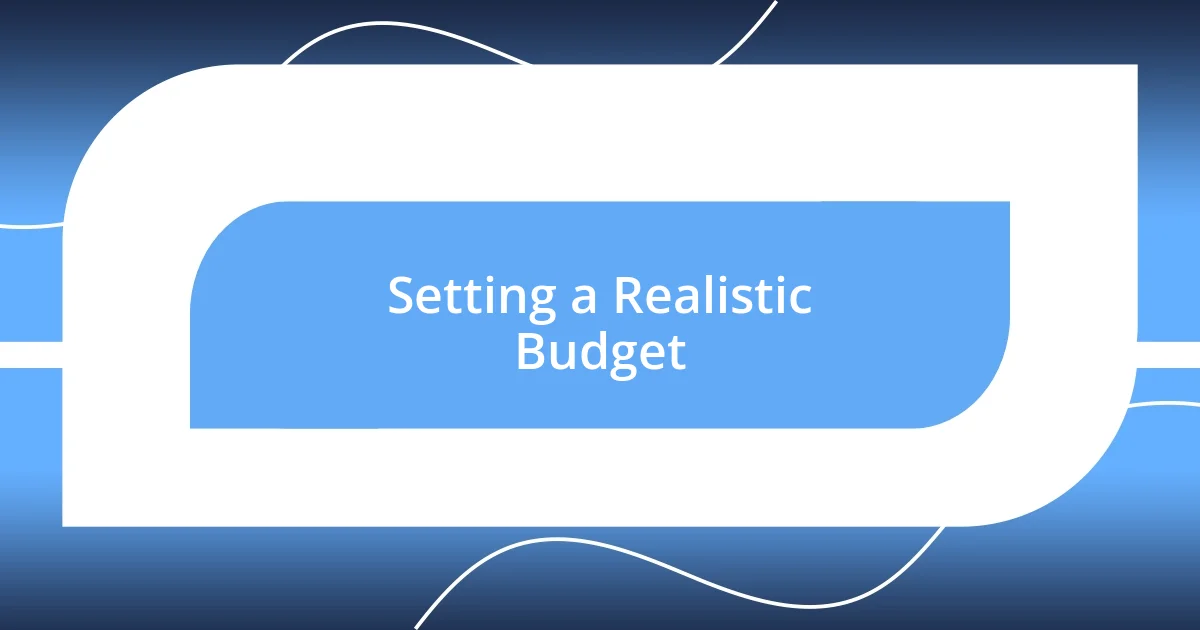
Setting a Realistic Budget
Setting a realistic budget was critical for me, and I learned firsthand that it’s essential to prioritize your needs versus wants. When I was first looking at homes, it was tempting to stretch my budget for that extra bedroom or fancy kitchen. However, I quickly realized that focusing on what I really needed helped create a more comfortable and sustainable financial future. Remembering that homes are often more than just a purchase—they’re an investment in my lifestyle—made all the difference.
Creating a budget necessitates being honest with myself about my financial limits. I’m not ashamed to admit that I initially felt some pressure from friends who had already bought their homes. Their stories of lavish decorations and extensive renovations made me question my own path. But after reflecting on my values, I focused on saving for a solid foundation instead of unneeded luxuries. This shift enabled me to concentrate on essential factors, like a reliable roof over my head, rather than comparing my journey with others’.
Ultimately, the mechanics of setting a budget came down to understanding my monthly expenses and planning for the unexpected. I remember feeling a wave of relief the first time I calculated my total expenses—including future home maintenance—versus my income. It was a wake-up call! I realized that budgeting could go beyond mere numbers; it could shape my overall peace of mind as a soon-to-be homeowner.
| Budgeting Elements | Considerations |
|---|---|
| Down Payment | Save at least 20% if possible to avoid PMI (Private Mortgage Insurance). |
| Closing Costs | Estimate 2%-5% of the home’s purchase price. |
| Ongoing Costs | Include property taxes, insurance, and maintenance. |
| Emergency Fund | Have at least 3-6 months’ worth of living expenses saved. |
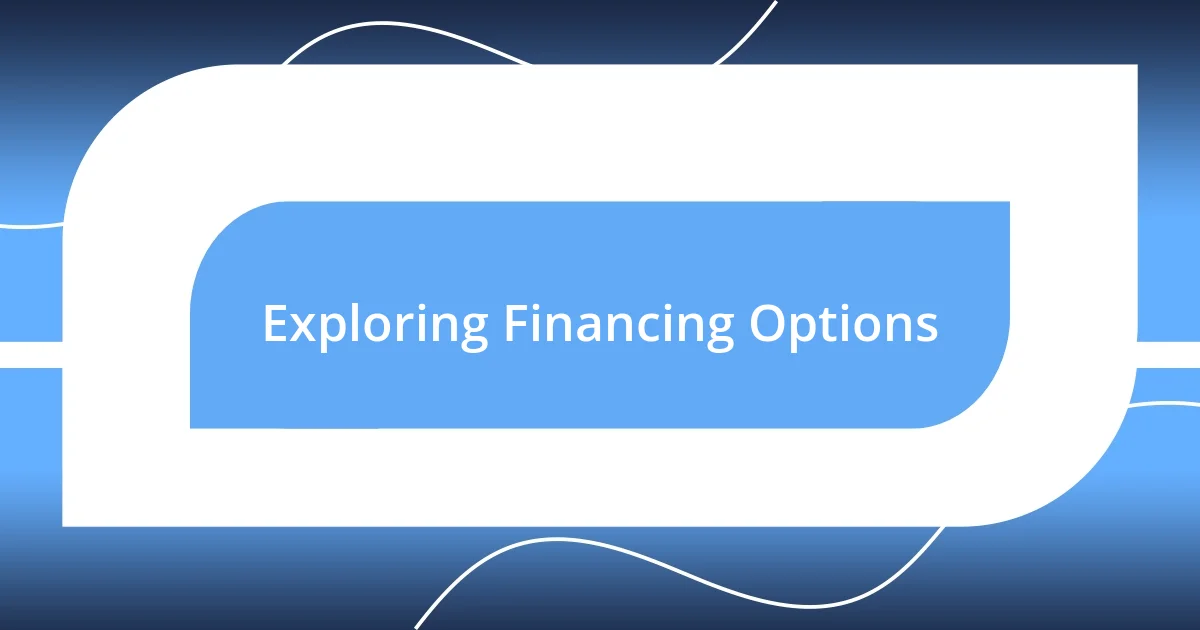
Exploring Financing Options
Exploring financing options is perhaps one of the most vital steps in the journey to homeownership. Personally, I remember experiencing a mix of excitement and anxiety when it came to selecting the right mortgage. There are various types of financing, such as fixed-rate, adjustable-rate, and FHA loans, each with its own pros and cons. I found myself asking, “Which one really suits my situation?” It was in those moments of probing that I began to understand how crucial it was to align the financing structure with my long-term financial goals.
As I researched different mortgage products, I gained insight into the importance of interest rates and how even a slight difference could impact my monthly payments significantly. I vividly recall comparing offers from multiple lenders and feeling a sense of liberation when I realized how much I could save with just a fraction of a percent lower on a rate. This was more than just numbers; it was a tangible takeaway that translated to hundreds of dollars saved each month. It’s pretty incredible how arming yourself with information about different loan types can bring peace of mind, all while ensuring you stay within your budget.
Additionally, I can’t stress enough the importance of understanding what your financing includes. I distinctly remember the moment I noticed the details of PMI—Private Mortgage Insurance—from my lender’s explanation. The weight of those additional costs hit me hard; I had to decide whether saving for a 20% down payment or exploring alternatives was worth it. It raised a crucial question in my mind: “What sacrifices am I willing to make today for long-term financial freedom?” This reflection helped solidify my approach toward financing, reinforcing the idea that informed choices lead to ownership that’s both satisfying and sustainable.
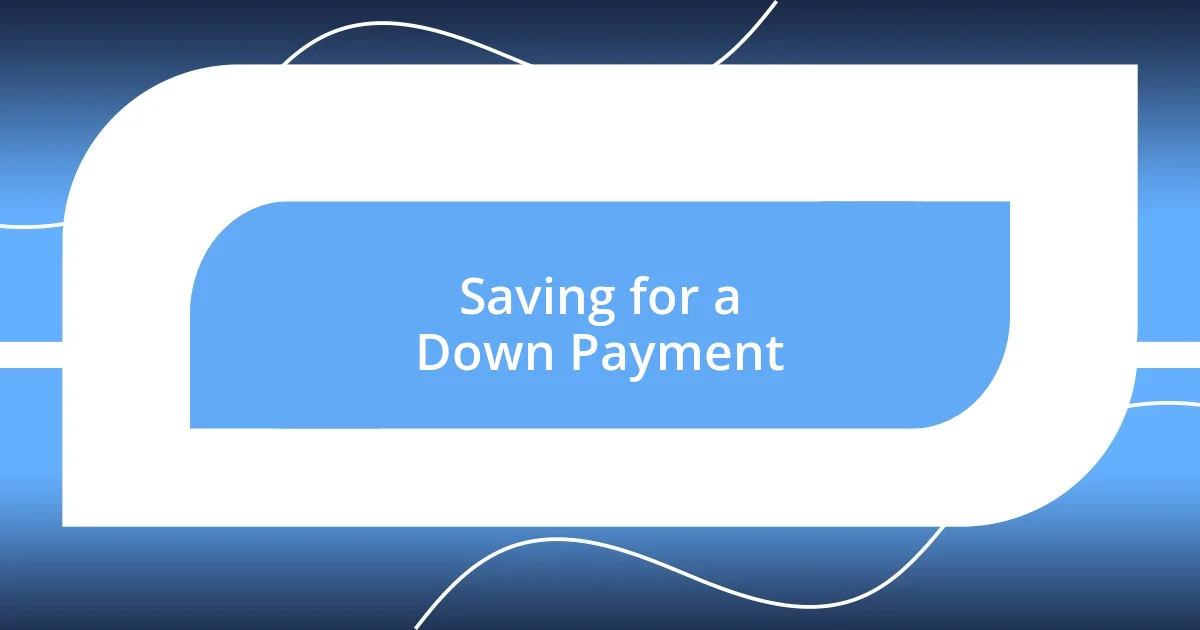
Saving for a Down Payment
Saving for a down payment can feel daunting at first, but I found that breaking it down into manageable goals made things much easier. I still remember setting up a dedicated savings account just for my down payment—it was like having a tangible reminder of my dream every time I checked my balance. I automatically transferred a specific percentage of my paycheck into that account each month, which created a sense of momentum and purpose. Have you ever tried that? The satisfaction of watching that number grow helped keep my motivation alive.
One key lesson I learned was the power of small sacrifices. I used to indulge in coffee runs and takeout meals several times a week, but I decided to cut back. By preparing more meals at home and brewing my coffee, those small changes made a surprisingly big difference. I realized that sometimes, it’s about prioritizing your long-term goals over short-term gratifications. It wasn’t easy to give up those little pleasures, but the excitement of inching closer to my down payment made it worth it.
Interestingly, I also discovered the importance of tapping into community resources. I stumbled upon a local first-time homebuyer workshop that opened my eyes to various down payment assistance programs. The feeling I had when I realized I wasn’t alone on this journey was uplifting. It’s incredible how connecting with others can illuminate paths to savings that you didn’t even know existed. Have you checked to see what your community might offer? The support can deepen your commitment and guide you toward reaching that financial milestone a little faster.
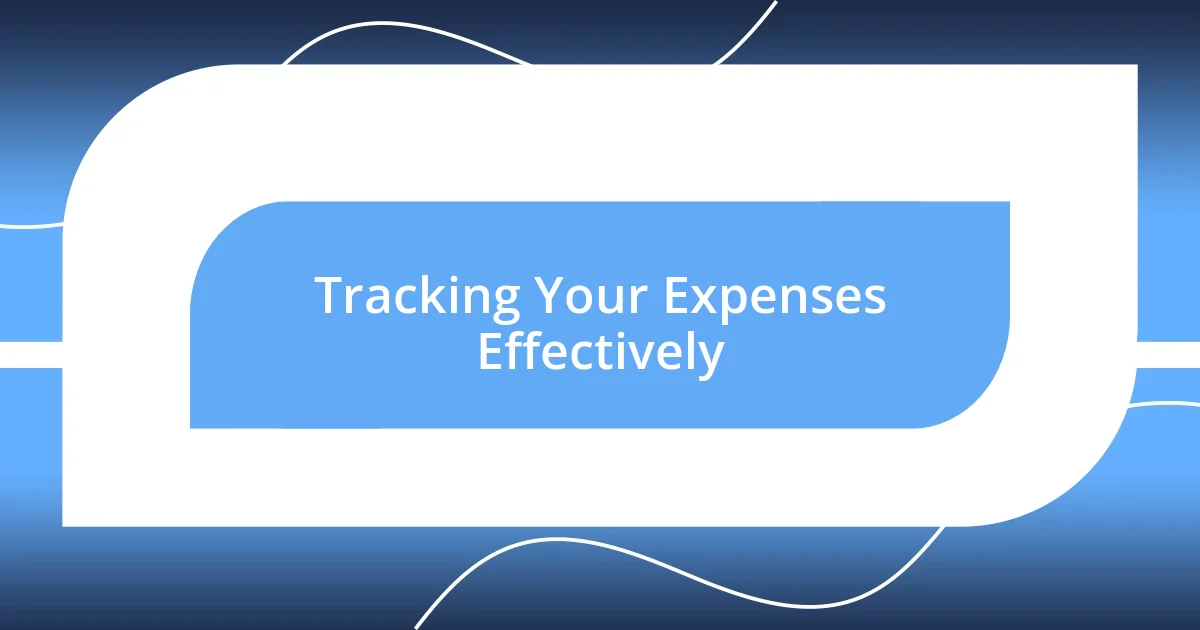
Tracking Your Expenses Effectively
Tracking your expenses is essential in creating a budget that works. When I started this journey, I found a simple spreadsheet to be my best friend. I recorded everything—from groceries to entertainment—and it was eye-opening to see where my money was really going. Have you ever looked at your spending and realized you could cut back on something unexpected? That moment of realization can drive meaningful changes.
There are also various apps available that can simplify this process. I remember experimenting with a couple of different ones until I found the one that suited my needs. The ability to categorize transactions automatically made it so much easier to identify spending patterns. It’s fascinating how technology can offer insights that you might otherwise miss while looking at a paper trail. Have you thought about how tech can support your financial journey? Sometimes, the right tools can bring clarity to what feels overwhelming.
In my experience, consistency is crucial. Initially, it felt tedious to log every expense, but over time, it became second nature. I set aside a few minutes each week to review my spending and update my budget. This regular check-in not only kept me accountable but also motivated me to stay on track. What about you? Have you carved out moments to reflect on your financial habits? Taking that time can truly help you recalibrate your goals and drive your journey toward homeownership with confidence.
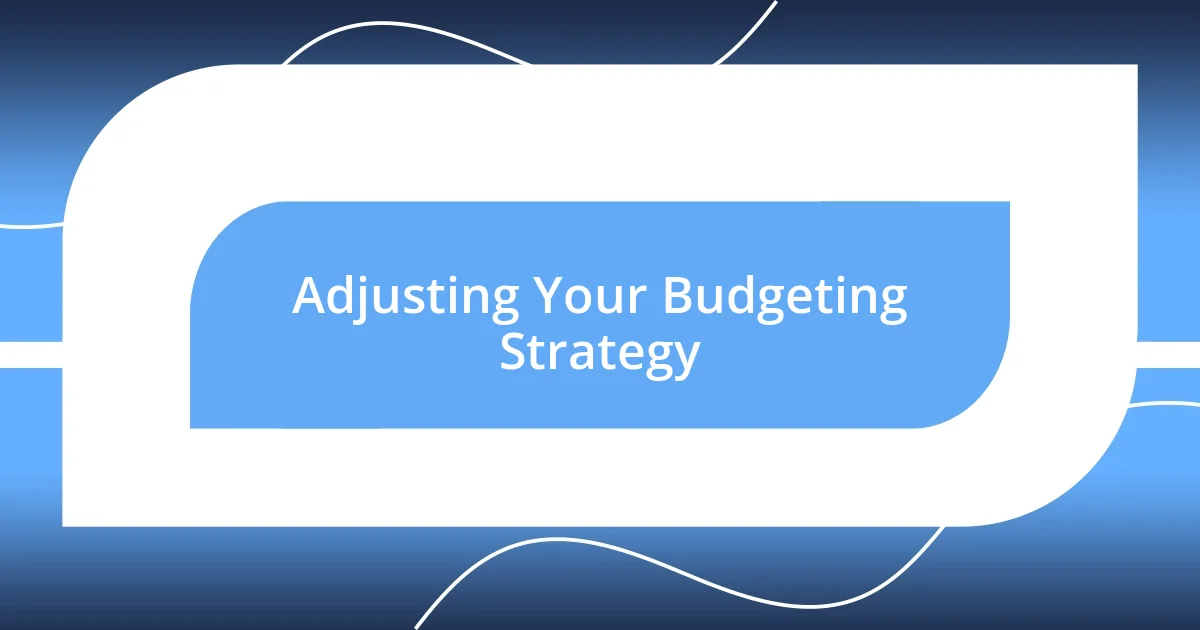
Adjusting Your Budgeting Strategy
Adjusting your budgeting strategy is crucial as your financial circumstances evolve. I remember the moment I got an unexpected bonus at work; I was tempted to splurge, but I paused. What if I redirected that money into my home fund instead? By recalibrating my budget right then, I managed to turn a fleeting moment of indulgence into a significant step toward my dream home.
Life can throw curveballs, and I found that anticipating changes is vital. For instance, when my car broke down, it shifted my entire financial outlook. Instead of panicking, I adjusted my budget to accommodate the repairs while still keeping my savings goals in sight. Have you ever faced an unexpected expense? It can feel overwhelming, but I learned that flexibility in budgeting allows for peace of mind. Knowing I could move money around and still stay on track made all the difference.
Another important lesson was assessing my priorities regularly. Each month, I would sit down and review what I spent and how close I was to my down payment goal. I noticed some subscriptions I hadn’t used in weeks—those were easy cuts. It got me thinking, how well do we really know what we’re spending? With a few shifts, I unlocked the potential to save even more. Re-engineering my budget gave me both control and motivation, reinforcing that every dollar counts on the road to homeownership.












